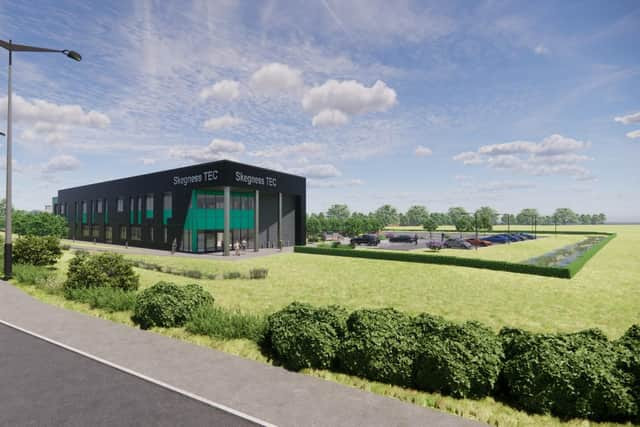A traveling art exhibit exploring the profound role of food in shaping cultures and communities is on display on Long Island through June 30.
Works by artist Donald Sultan, pictured here right attending a 2018 event at the Parrish … [+]
More than 100 drawings, paintings, photographs, sculptures and ceramics by 37 Jordan D. Schnitzer Foundation artists are on display in “The Art of Food” at the Parrish Museum of Art in Water Mill, NY. These works include works by post-war artists such as David Hockney, Jasper Johns, Robert Rauschenberg, Ed Ruscha and Andy Warhol; by contemporary artists such as Enrique Chagoya, Jenny Holzer, Alison Saar, Lorna Simpson and Rachel Whiteread; and by artists with deep roots in the East End of Long Island, where the museum is located, including Robert Gober, Roy Lichtenstein, and Donald Sultan.
“The title of the exhibition aptly encapsulates how food continues to inspire and fascinate artists,” said Corinne Erni, Chief Curator at the Parrish. “This exhibition brings together a remarkable body of works that delve into the multifaceted nature of food as a cultural symbol and medium of artistic expression. The works offer much joy and provoke many questions about food in our society.”
“Since the beginning, all artists of every generation have used food objects in their art. Food is the most universal part of our lives. Think food and shelter. In today's world, food affects every aspect of our lives. Our social interactions, what we put in our bodies, those who face malnutrition every day, the effect of climate change on food production, all the critical issues of our time,” said Schnitzer, a businessman and philanthropist based in Portland, Oregon.
He added: “The artists in this exhibition bring us joy and humour, but also thoughtful challenges about our health based on what we eat! I hope that everyone who visits this exhibition will leave with new thoughts about the importance of food in our lives through the voices of these incredible artists!”
The exhibit also relates the history of the East End of Long Island as an important agricultural and fishing region of New York State.
According to Parrish, “the area became farmland in the 1640s, and by the 1820s up to 95 percent of residents lived on farms. While Greenport and Sag Harbor were ports for trade and whaling, Peconic Bay was known for its fish and shellfish. Today, the East End remains an agricultural hub, producing over 100 different crops and is an increasingly prominent wine region with over 60 vineyards.”



